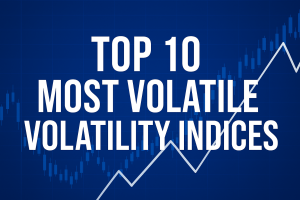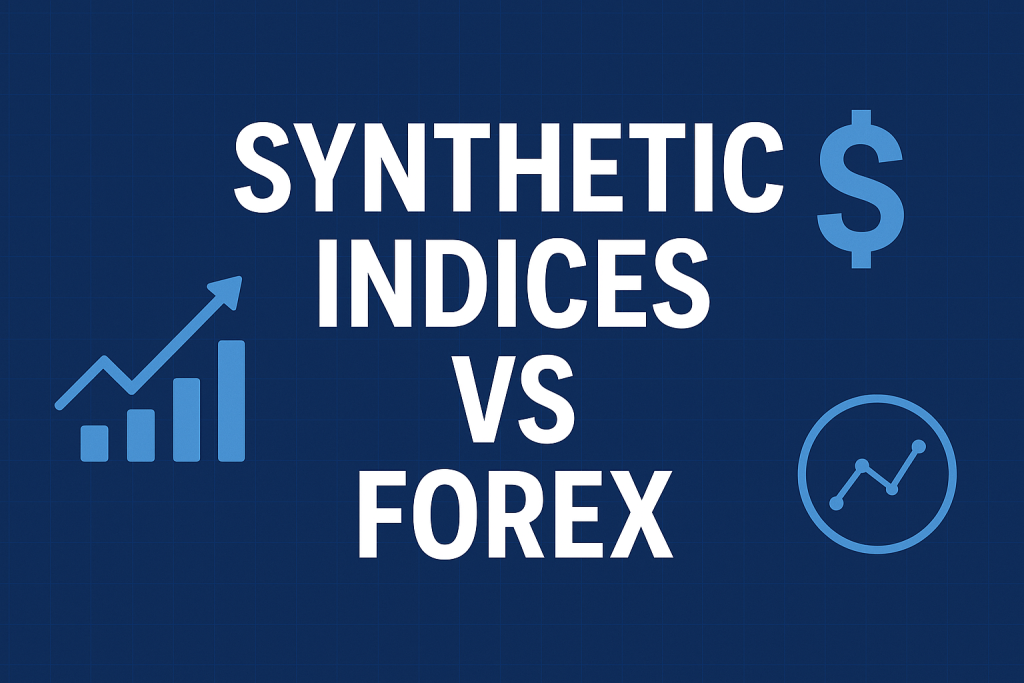The most volatile volatility indices offer exciting opportunities for traders because their price movements can be far more dramatic than those of lower-volatility indices. While this high volatility can increase the potential for profit, it also carries a greater degree of risk.
Unlike forex pairs that are influenced by interest rates, geopolitics, or economic performance, volatility indices are synthetic instruments driven by algorithms with fixed volatility levels. This makes them unique, as their movements are not affected by real-world events but by programmed algorithms that ensure constant market activity. For example, the Volatility 100 Index always runs at 100% volatility, while the Volatility 50 Index is fixed at 50%, relative to the broker’s volatility model. Brokers measure volatility through internal algorithms that control tick speed and contract multipliers.
That being said, there are important factors you need to consider before trading highly volatile indices. The speed of price changes and the scale of potential swings can make these markets unforgiving without a solid trading plan and effective risk management. If you are a beginner in trading, you may find the pace challenging, but with practice and discipline, you can trade successfully.
In this blog post, we will delve into the Top 10 Most Volatile Volatility Indices and share tips on how you can trade them effectively. Since Deriv is the only broker that offers a wide range of synthetic volatility indices, we will be reviewing the most volatile ones available on their platform.
What Makes an Index Volatile?
Volatility indices are algorithm-driven markets, meaning the volatility of each index depends on the broker’s programming rather than real-world events.
Deriv offers volatility indices with fixed volatility levels ranging from 10 to 250. The higher the number, the greater the price movement. Simply put, higher volatility = higher risk and higher reward.
These indices also differ by tick speed, which determines how often prices update:
-
One-second ticks (1s): More frequent, smaller price changes—ideal for fast-paced trading.
-
Two-second ticks (2s): Larger price movements at a slower pace—better suited for strategic trades.
Pro Tip: Even if two indices share the same volatility level (e.g., Volatility 10 (1s) vs. Volatility 10 (2s)), their price movements are completely independent.
List of 10 Most Volatile Volatility Indices

Among the 15 volatility index instruments offered by Deriv, here is the list of the top 10 most volatile volatility indices:
-
Volatility 250 (1s) Index
-
Volatility 150 (1s) Index
-
Volatility 100 (1s) Index
-
Volatility 100 Index
-
Volatility 90 (1s) Index
-
Volatility 75 (1s) Index
-
Volatility 75 Index
-
Volatility 50 (1s) Index
-
Volatility 50 Index
-
Volatility 30 (1s) Index
1) Volatility 250 (1s) Index
The Volatility 250 (1s) Index is the most volatile synthetic index on Deriv. It runs at a fixed 250% volatility. The ticks update every one second, and this offers extreme price movement frequency. This particular volatility index is good for fast-paced, high-risk, high-reward strategies.
-
Lot Sizes: You can trade from a minimum of 0.5 lots up to a maximum of 30 lots.
-
Spread: The average spread is around 6 points, which is relatively tight compared to the massive volatility level.
-
Stop Levels: Orders must respect a minimum distance of 200 points from the current price.
-
Swaps: Holding trades overnight incurs a -25% swap fee (applied to both long and short positions).
-
Tick Value: Each tick movement is worth $0.01 per lot, with a contract size fixed at 1.
-
Execution: Trades are filled with market execution in real time.
-
Margin & Profit Currency: Both are denominated in USD.
The Volatility 250 (1s) Index is designed for experienced traders who want to maximize returns from explosive market movements. Its combination of fast tick speed, high volatility, and tight spreads makes it the ultimate challenge for precision trading — but also one of the riskiest indices on the platform
2) Volatility 150 (1s) Index
The Volatility 150 (1s) Index offers a 150% fixed volatility level. This volatility index is one of the most aggressive synthetic indices available on Deriv. It has one-second tick updates, and this makes it highly responsive, creating constant opportunities for scalpers and short-term traders.
-
Lot Sizes: You can trade from as little as 0.1 lots up to 50 lots.
-
Spread: The average spread is around 5 points, which balances well with the volatility level.
-
Stop Levels: Orders must maintain a minimum distance of 149 points from the current market price.
-
Swaps: Overnight positions attract a -15% swap fee (applied to both long and short trades).
-
Tick Value: Each tick movement is worth $0.01 per lot, with the contract size fixed at 1.
-
Execution: Orders are executed with market execution.
-
Margin & Profit Currency: Both are settled in USD.
The Volatility 150 (1s) Index is ideal for traders looking for a balance between extreme volatility and manageable spreads. Its fast-paced environment allows for frequent trading setups while still offering enough breathing room compared to the ultra-volatile Volatility 250 (1s).
3) Volatility 100 (1s) Index
The Volatility 100 (1s) Index is one of the most popular synthetic indices on Deriv. It runs at a fixed 100% volatility level and its price updates every second.
-
Lot Sizes: Trade from 0.2 lots up to a massive 330 lots, this makes it good offering for both retail and institutional-level strategies.
-
Spread: The average spread is about 21 points, wider than lower-volatility indices but proportional to its strong price movements.
-
Stop Levels: Orders must respect a 72-point minimum distance from the current price.
-
Swaps: Overnight positions attract a -10% swap fee on both long and short trades.
-
Tick Value: Each tick is worth $0.01 per lot, with the contract size fixed at 1.
-
Execution: Orders are processed via market execution.
-
Margin & Profit Currency: All trades are denominated in USD.
The Volatility 100 (1s) Index strikes a balance between speed and power. While not as extreme as Volatility 150 (1s) or 250 (1s), it remains highly volatile and offers plenty of short-term trading opportunities. This makes it a favorite for scalpers and day traders who prefer fast, high-frequency market conditions.
4) Volatility 100 Index
The Volatility 100 Index is a fixed synthetic index that runs at 100% volatility, but unlike its (1s) counterpart, it generates price updates every 2 seconds. This slightly slower tick speed makes it less frantic while still delivering consistent volatility and trading opportunities.
-
Lot Sizes: Minimum 0.5 lots, with a maximum of 220 lots.
-
Spread: The spread is about 32 points, wider than the (1s) version.
-
Stop Levels: A minimum of 138 points from the current market price is required for pending orders and stops.
-
Swaps: Overnight trades carry a -10% swap fee for both long and short positions.
-
Tick Value: Each tick is worth $0.01 per lot, with the contract size fixed at 1.
-
Execution: All orders are filled via market execution, ensuring real-time responsiveness.
-
Margin & Profit Currency: Denominated in USD.
The Volatility 100 Index is best suited for traders who want strong, sustained volatility without the extreme tick frequency of the (1s) version. Its slower pace (2s ticks) provides more breathing room for trade planning. This makes it a good fit for swing traders or those who prefer a slightly less hectic synthetic index environment.
5) Volatility 90 (1s) Index
The Volatility 90 (1s) Index is a synthetic index with a fixed 90% volatility level, designed to simulate consistent market conditions while generating price updates every second.
This instrument strikes a balance between highly volatile instruments like V100 (1s) or V150 (1s) and slower-paced indices.
-
Lot Sizes: Tradeable from a minimum of 0.2 lots up to 20 lots.
-
Spread: The spread is listed as 5,767 points, which reflects MT5’s point-based system for this instrument. While it looks large numerically, it’s relative to the index’s pricing scale.
-
Stop Levels: Pending orders and stop-loss/take-profit levels must be placed at least 22,257 points away from the current market price.
-
Swaps: Overnight positions incur a -9% swap fee for both long and short trades.
-
Tick Value: Each tick movement is worth $0.001 per lot, with the contract size fixed at 1.
-
Execution: Filled using market execution, ensuring no requotes.
-
Margin & Profit Currency: Both calculated in USD.
The Volatility 90 (1s) Index is best suited for traders seeking moderate-to-high volatility without the overwhelming speed of indices like Volatility 250 (1s). Its 1-second tick speed allows for fast execution strategies while maintaining a controlled environment for intraday and short-term setups.
6) Volatility 75 (1s) Index
The Volatility 75 (1s) Index is one of the most popular synthetic indices, running at a fixed 75% volatility level with 1-second tick updates. Its balance of speed and volatility makes it a favorite among traders looking for fast-paced but manageable trading opportunities.
-
Lot Sizes: Tradeable from a minimum of 0.05 lots up to 80 lots.
-
Spread: The spread is set at 86 points, providing relatively tight trading conditions compared to higher-volatility indices.
-
Stop Levels: Orders must be placed at least 432 points away from the current price, giving room for flexible strategy placement.
-
Swaps: Overnight positions attract a -7.5% swap fee for both long and short trades.
-
Tick Value: Each tick movement is worth $0.01 per lot, with a fixed contract size of 1.
-
Execution: Orders are filled using market execution, ensuring no requotes.
-
Margin & Profit Currency: Both calculated in USD.
With its unique mix of high volatility and manageable tick speed, the Volatility 75 (1s) Index is often used by scalpers, intraday traders, and algorithmic systems. It provides fast-moving market action while avoiding the extreme chaos of higher-volatility indices like V150 (1s) or V250 (1s).
7) Volatility 75 Index
The Volatility 75 Index (VIX 75) also known as the king of synthetic indices is one of the most popular synthetic indices on Deriv, running at a fixed 75% volatility. Unlike its (1s) counterpart, it ticks every two seconds, providing traders with more breathing room to plan entries and exits.
-
Lot Sizes: You can trade as little as 0.001 lots, with a maximum of 10 lots. This flexibility makes it accessible to both beginners and professional traders.
-
Spread: The typical spread is around 2240 points, which may seem large but is normal for synthetic indices with higher price scales.
-
Swaps: Holding trades overnight incurs a swap fee of -7.5%, applied on both long and short positions.
-
Tick Value: Each tick movement has a value of 0.0001, and contract size is fixed at 1.
-
Execution: Orders are executed with market execution, ensuring real-time order fills.
The V75 Index is known for its explosive price swings, making it a favorite for traders seeking high-risk, high-reward opportunities. However, the wide spread and sharp volatility mean proper risk management is essential.
8) Volatility 50 (1s) Index
The Volatility 50 (1s) Index runs at a fixed 50% volatility level, offering traders a balanced synthetic market that updates every second. With its moderate volatility and 1-second tick speed, it is ideal for those who want steady trading conditions without the extreme swings of higher indices like V75 or V100 (1s).
-
Lot Sizes: Tradeable from as low as 0.005 lots up to 2 lots. This instrument is perfect for beginners or traders managing small accounts.
-
Spread: The spread is listed as 2,945 points, which may appear large but is relative to the index’s price scale.
-
Stop Levels: Orders must be placed at least 6,996 points away from the current market price.
-
Swaps: Overnight trades attract a -5% swap fee for both long and short positions.
-
Tick Value: Each tick movement is worth $0.01 per lot, with a fixed contract size of 1.
-
Execution: Orders are executed with market execution, ensuring no requotes.
-
Margin & Profit Currency: Both are settled in USD.
Thanks to its lower volatility compared to V75 or V100, the Volatility 50 (1s) Index is a great choice for traders seeking controlled exposure while still benefiting from algorithm-driven price movements. Its tiny lot size flexibility makes it beginner-friendly.
9) Volatility 50 Index
The Volatility 50 Index is a synthetic instrument fixed at 50% volatility, updating every 2 seconds. Unlike the faster-paced (1s) version, this index offers a slower tick speed, making it suitable for traders who prefer more measured price movements and less market noise.
-
Lot Sizes: Tradeable from a minimum of 4 lots up to a massive 3,700 lots, making it best suited for experienced traders or those managing larger accounts.
-
Spread: A relatively tight 170-point spread, offering better cost efficiency compared to the 1s version.
-
Stop Levels: Orders must be set at least 1,350 points away from the current price.
-
Swaps: Overnight positions incur a -5% swap fee for both long and short trades.
-
Tick Value: Each tick movement is worth $0.0001 per lot, with a fixed contract size of 1.
-
Execution: Orders are filled using market execution, ensuring no requotes.
-
Margin & Profit Currency: Both calculated in USD.
With its slower tick speed and tighter spreads, the Volatility 50 Index (2s) is perfect for traders who want strategic trade setups without the constant rush of 1-second price updates. It’s particularly attractive for swing traders and algorithmic strategies that perform better in less intense environments.
10) Volatility 30 (1s) Index
The Volatility 30 (1s) Index runs at a fixed 30% volatility level, and is the 10th most volatile volatility indices available on deriv. With 1-second tick updates, it provides consistent market activity but with smaller and steadier price swings. This makes it ideal for traders who prefer a controlled trading environment.
-
Lot Sizes: Tradeable from a minimum of 0.2 lots up to 120 lots (Flexible for retail and professional traders).
-
Spread: The spread is 528 points, which reflects MT5’s point-based pricing for this index.
-
Stop Levels: Orders must be placed at least 1,800 points away from the current price.
-
Swaps: Overnight positions incur a -3% swap fee for both long and short trades.
-
Tick Value: Each tick movement is worth $0.001 per lot, with a fixed contract size of 1.
-
Execution: Market orders are executed using market execution, ensuring no requotes.
-
Margin & Profit Currency: Both are settled in USD.
Because of its lower volatility, the Volatility 30 (1s) Index is often used by beginners, conservative traders, or those testing new strategies. It offers a safer entry point into synthetic indices compared to high-volatility instruments like V75 (1s) or V100 (1s).
How to Approach Trading Highly Volatile Indices
Trading volatile indices can be profitable, but it’s not without challenges. Here are some practical tips:
-
Start with a demo account → Build confidence before trading with real capital.
-
Use small lot sizes → Manage risk exposure on fast-moving instruments.
-
Always set stop-losses → Volatile moves can wipe out accounts if left unmanaged.
-
Pick the right tick type → 1s for scalping speed, 2s for more deliberate moves.
-
Stay disciplined → Don’t let the excitement of volatility override your trading plan.
Conclusion
From what we have covered so far, the most volatile volatility index on Deriv is the Volatility 250 (1s) Index. It runs at a fixed 250% volatility, and the ticks update every one second. Deriv offers a total of 15 volatility indexes, which range from the Volatility 10 index to the Volatility 250 index. The higher the number, the greater the spead of price movement and hence the higheer the volatility.

Hello, I’m Alexander, the writer and founder behind Synthetic Giant.
I am a seasoned forex and synthetic indices trader with years of hands-on experience in the financial markets, including cryptocurrency, forex, and stocks. Over time, I’ve gained a strong understanding of how different markets work, and I’ve developed a passion for helping others navigate them.
In addition to trading, I have a strong background in writing and research. This combination inspired me to create Synthetic Giant — a platform dedicated to providing traders with tips, strategies, broker reviews, and step-by-step guides on synthetic indices.
My goal is simple: to help beginners and experienced traders alike gain the knowledge they need to trade synthetic indices confidently and profitably.
When I’m not trading or writing, I’m often exploring new ways to simplify financial concepts and share them with my audience in clear, practical terms.
📧 For inquiries, feel free to reach me at admin@syntheticgiant.com
.


